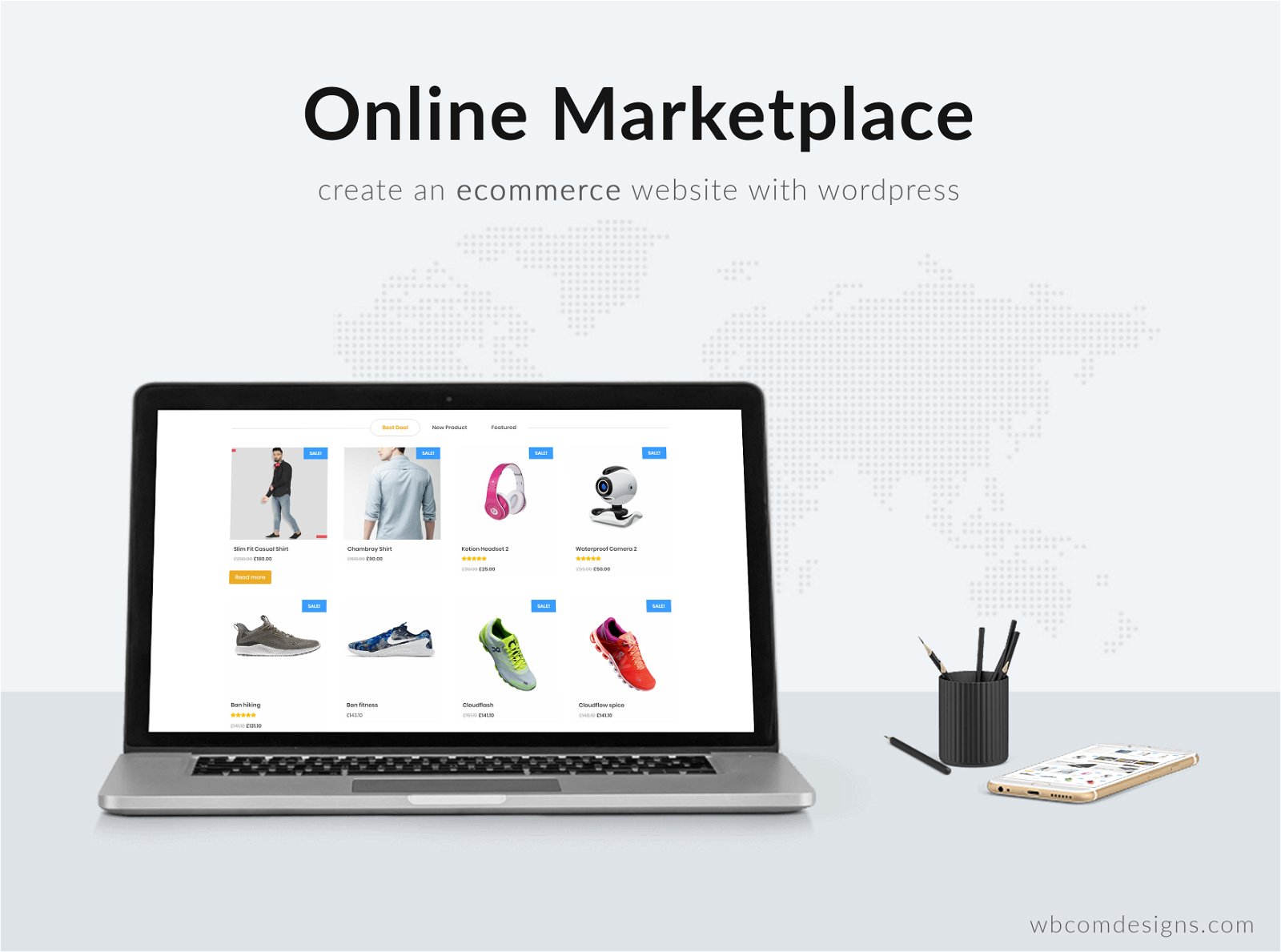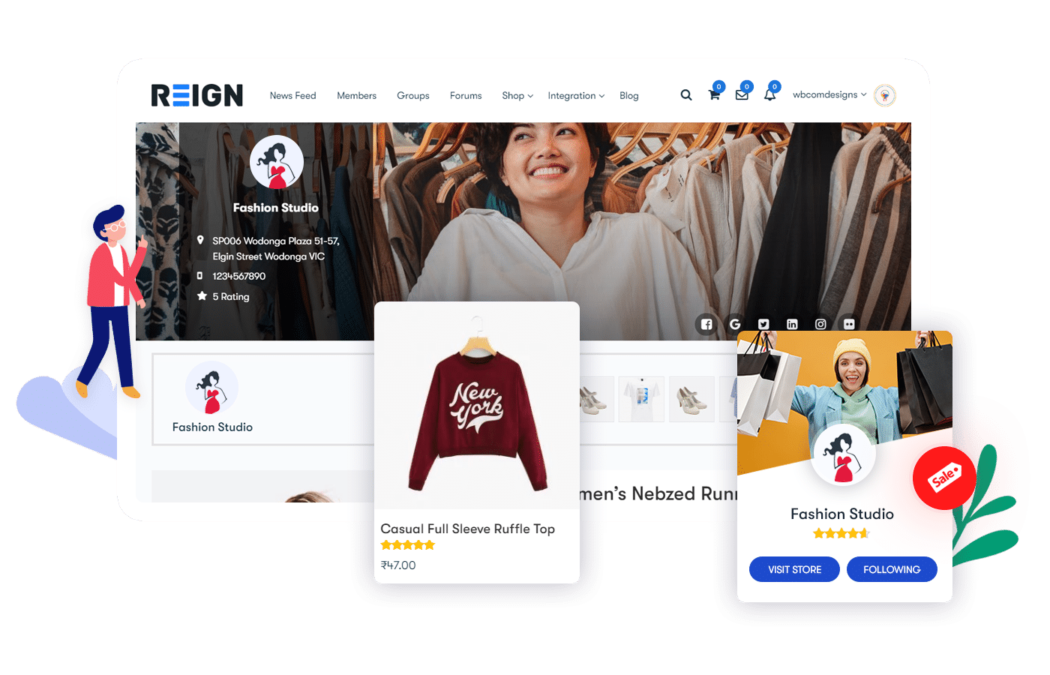Are you looking for a way to start an ‘on-demand near me’ business? Have you always wondered what a hyperlocal marketplace is? You are in the right place! In this article, we will go through the basics of the hyperlocal marketplace and understand how such a business can be done smoothly and efficiently.
As the name suggests, a hyperlocal marketplace is a business model that helps sellers in targeting specific zones to cater to the needs of local buyers in a small period. It is also known as On-Demand near-me delivery model.
To put it simply, it helps consumers receive their orders faster and more conveniently. It is a great way to help small-scale retailers by allowing them to grow their businesses.
Some examples of the hyperlocal delivery model are GoodEggs, Yelp, InstaCart, and so on. However, it is important to note that the on-delivery demand model is not restricted to only groceries and food items. In recent years, a lot of other industries like pharmacy, logistics, and bookings have taken this model and achieved success.
Table of Contents
ToggleLet’s understand more about such a delivery model

The hyperlocal delivery model has two main factors: Geography and Time.
Such a business is considered successful if products are delivered in a larger geographical area in a shorter period without any hassle. This model allows sellers to sell products and services via the same online store. They earn by selling their products and services and the store owner earns through commission on these products and services.
Time is an important element for any hyperlocal delivery model. It is possible if the sellers to offer their products and services in nearby targeted areas. Due to this, it is meant to work well in the grocery and dairy industry – as the goods are supposed to be fresh and consumable. When sellers from nearby areas make deliveries to the customer, it becomes possible to make on-time deliveries.
Also Read: Best WordPress Affiliate Plugins
The functioning of a hyperlocal marketplace
The approach used by a hyperlocal marketplace is the multichannel approach. This is designed to provide a hassle-free experience to the customer – whether they choose to shop online through a mobile device, a laptop, or a physical store. Hyperlocal marketplaces use a real-time back-end architecture.
Here are the four primary stages of a hyperlocal marketplace
- Tracking the location of the customer through a website or a mobile app.
- An order will be accepted by the seller if the customer is within the targeted delivery area.
- Once the order is placed, the seller gets a notification for the same.
- The delivery boy then picks up this order from the seller and delivers the same to the customer who placed the order.
Different hyperlocal delivery models for different industries
- FMCG – Fast Moving Consumer Goods (FMCG) are products that have a short shelf life and expire within a few days. Examples include groceries, bakery products, and dairy products.
- On-Demand Service – This model helps the customers receive the services they need from professionals in the area. It can include housecleaning, transport, massages, and other services. A great example of the same is Urban Clap.
- On-Demand Booking – Here, the model focuses on bookings made by the customer. It could be a doctor’s appointment, flight bookings, or cab bookings.
- On-demand Concierge – This model is used to send documents, tiffins, and other such items from one place to another. An example is Dunzo.
Creation of a hyperlocal marketplace
Firstly, the store owner needs a channel for the customers to place an order. It should be designed in a way that the seller can accept and process new orders and the store owners can track the status and check if it is delivered within the delivery time. There are three primary ordering channels – online store website, hyperlocal marketplace mobile apps, and progressive web apps (PWA). By understanding your brand and the kind of features of each, you can decide what works best for you. Here is a short introduction to such ordering channels:
- Online Store Website: Creating a website requires a lot of work. You can either create an online eCommerce website like Magento or Opencart or convert your store into a hyperlocal marketplace website. Such a website is based on a standard eCommerce framework and it should be relatively easy for you.
- Hyperlocal Marketplace Mobile Apps: Again, you can either choose native mobile apps or cross-platform apps. Native apps are created for iOs and Android users and provide specific tools and languages for development. On the other hand, cross-platform apps have single source code apps and can be launched both on iOS and Android. We recommend cross-platform apps as they are cost-friendly and can be created without much hassle.
- Progressive Web Apps (PWA): These can be used by customers even with a slower internet speed and in offline mode. They are directly installed and used by Android users through the Google Play Store. They come in handy for both the owner and the customer and provide updates about the status of an order.
To sum it up
The hyperlocal marketplace as a business model is growing more and more each day. A huge chunk of businesses from various industries prefers this model for its many benefits. It is an ideal way for sellers to increase their target area and reach more customers. Additionally, it helps customers get faster services easily. Now you can create your own ‘on-demand near me’ business. You must build partnerships with other merchants and delivery agencies to ensure the success of your brand. Once you target the right kind of audience and reach out to them efficiently through your app, you will be all set!
Here we are! We hope this article has been helpful to you and has given you a detailed idea about hyperlocal marketplaces. Thank you for reading, stay safe, and all the best with your business!
Interesting Read:
How to Establish Trust in your Marketplace Community?
Free Ways to Gain Instant Website Traffic
Factors to Consider Before Hiring a Web Development Firm for an E-commerce Venture








